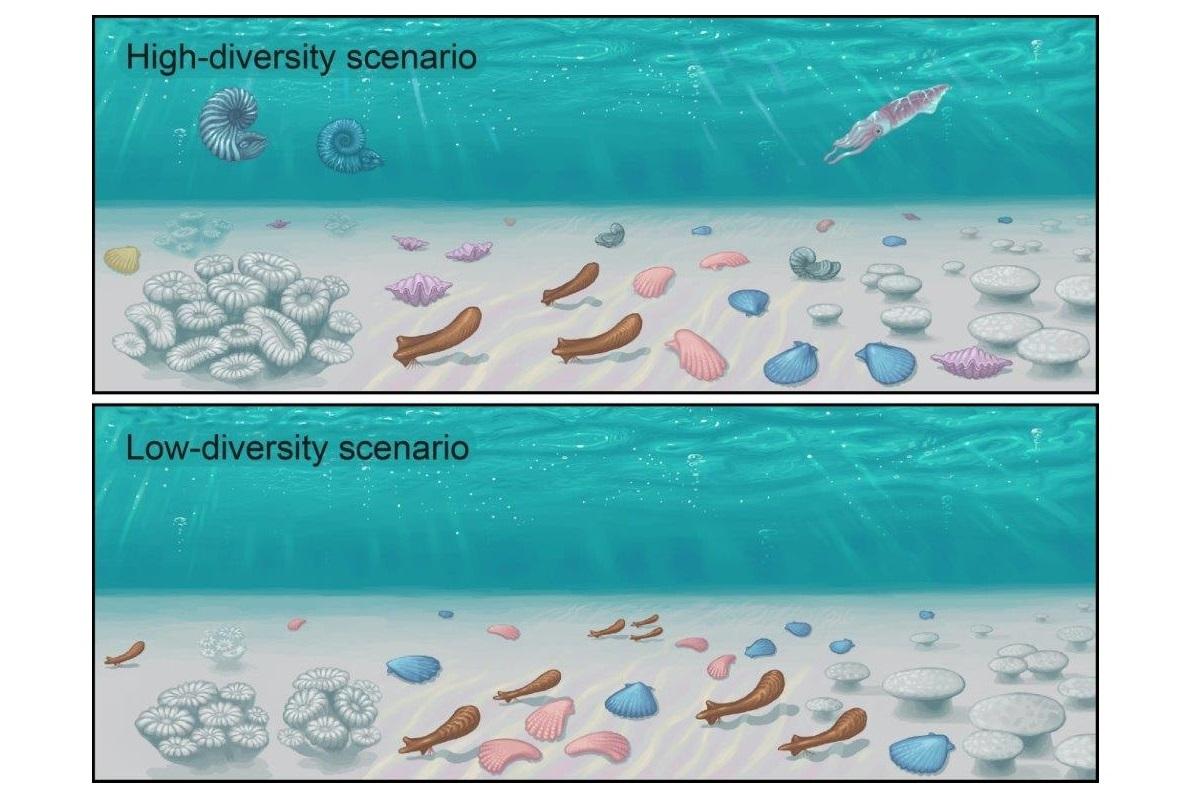All species rely on resources such as food and suitable habitat. Competition over these resources could influence how many species are in a region and how geographically widespread are those species. If many species are present and competition is high their distributional areas should be smaller than at times when only a few species exist. Palaeontologists from the University of Oxford, the University of Erlangen, and the Naturkundemuseum Berlin suggest that competition may not be as important on large scales as prevailing theory would imply.
The team examined bivalve and brachiopod species’ distributions throughout most of the Phanerozoic (the last 485 million years). These two animal groups are filter-feeding marine invertebrates of similar body size, and their fossils are abundant and well-studied. The researchers found that contrary to prediction the geographic distribution varied independently of the respective number of species present. „It is really important that such seemingly plausible relations are actually tested with appropriate data”, said Martin Aberhan who was part of the study.
This result was particularly surprising with regard to mass extinctions such as those at the end of the Permian (252 million years ago) and the end of the Cretaceous (66 million years ago) periods. According to theory the survivors of such global crises should be especially successful in taking over the space of the victims. Yet, on average, the surviving brachiopod and bivalve species were not any more widespread than before.
The results suggest that over Earth’s history, factors other than competition have driven large scale distribution patterns in marine animals. For instance, habitat availability could play a large role in how far a species can spread.
Published in: Antell, G.S., Kiessling, W., Aberhan, M., and Saupe, E.E. Marine biodiversity and geographic distributions are independent on large scales. Current Biology (2019), https://doi.org/10.1016/j.cub.2019.10.065
Free pictures you get here:
http://download.naturkundemuseum-berlin.de/presse/Konkurrenzdruck
Credit: Andrew Orkney, Oxford
According to theory, species surviving a mass extinction event should become more widespread (lower panel) than before the event (upper panel).
